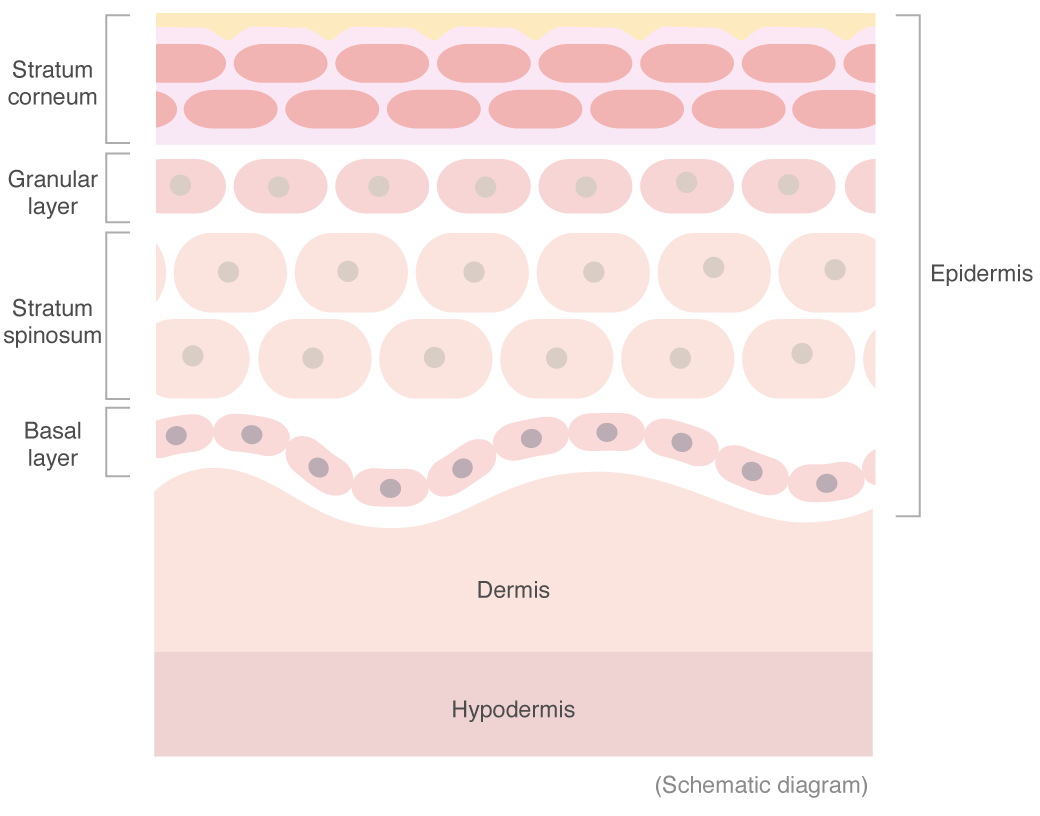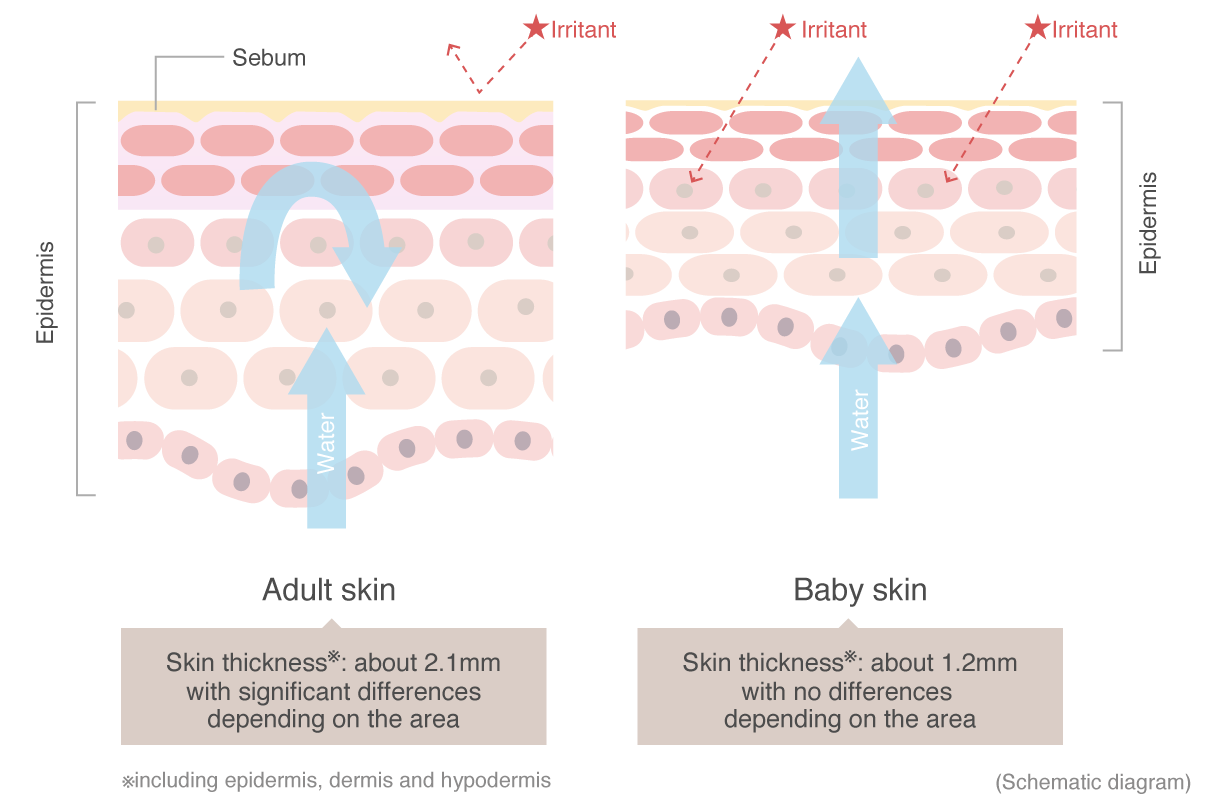Your skin protects your life
Did you know that the skin is the largest organ in our body? It has a unique structure that allows it to survive in dry environments, a feature that evolved over time in living organisms.
The skin is comprised of three main layers: epidermis, dermis, and hypodermis. The epidermis is the outermost layer of the skin that directly interacts with the external environment. Despite being less than 0.2 mm thick, it serves as a shield that protects us from harmful foreign substances while also preventing water loss from the body.


It's truly wonderful how a baby's skin is formed in the mother's womb, and the way it resembles the development of the human body over a long period of time is just breathtaking. It's almost as if we get to witness millions of years of evolution in just a few months. The miracle of life never ceases to amaze us.
A baby's skin is delicate
Although the skin structure of newborns is similar to that of adults, it is only half as thick. On top of that, their skin contains fewer natural moisturizing factors (such as amino acids), intercellular lipids, and sebum, which are necessary for moisturizing and providing a barrier against irritants. As a result, their skin is more vulnerable to dryness and external irritants.

It takes up to 3-4 years for a baby's
skin to become more like adult's one


The top layer of the epidermis is known as the stratum corneum. The thicker it is, the lower is skin's moisture transpiration rate (the amount of water that escapes from the body) and the better it becomes at acting as a barrier. It is said that it takes around three and a half years for a baby's stratum corneum to reach the same level of moisture and function as an adult's.
A baby's skin needs moisturization
Although a baby's skin may appear smooth and moist, it may not have enough moisture and oil to maintain its barrier function. Some studies have shown that there can be a significant difference between what mothers perceive to be well-moisturized skin and the actual condition of their baby's skin. It is crucial to care for your baby's skin properly and avoid relying solely on its appearance.
The skin condition of 70 one-month-old infants was evaluated and found to be dry. A total of 97.1% of their skin was deemed as "inadequate" in terms of moisture, while 42.1% was considered "inadequate" in terms of oil content.
However, despite these findings, over 80% of mothers assessed their babies' skin condition as "normal." This discrepancy suggests a potential lack of appropriate skin care provision, which may lead to skin problems resulting from the deterioration of the skin's barrier function.
Dry skin can allow foreign substances to enter the skin, causing various skin issues.
Why do babies sweat so much?

We, humans, release heat from our bodies through sweating. It's interesting that the number of sweat glands we have doesn't change from infancy to adulthood. That's why babies look like they sweat more than adults, while in fact, they have the same amount of sweat glands in their smaller bodies.
Too much sweating can lead to loss of body heat and skin irritation if not taken care of properly. So, it's important to change clothes regularly and thoroughly wash away all sweat from the skin.
Also, it's worth noting that babies' sweat glands are still immature. Therefore, it's crucial to provide them with a suitable environment for the season and encourage proper sweating practices until they reach 2 to 3 years of age.




